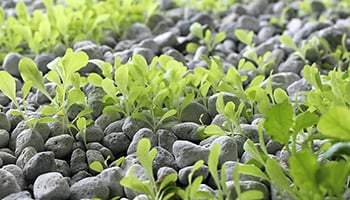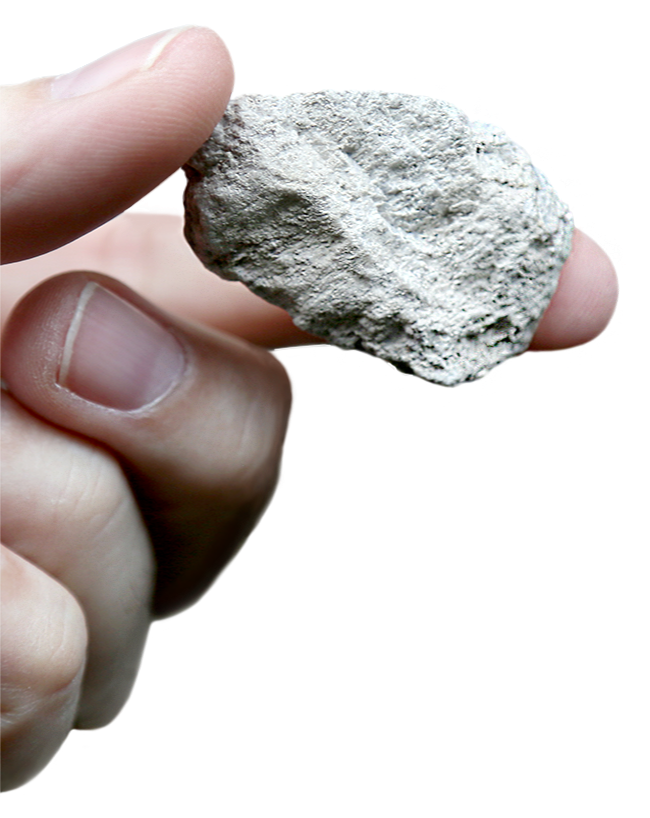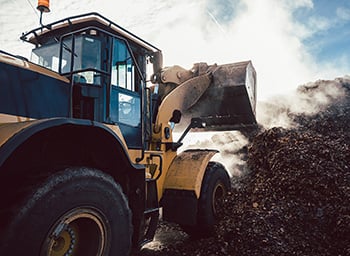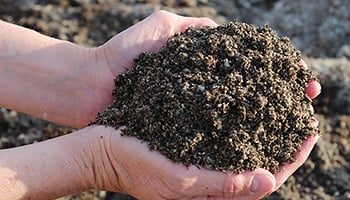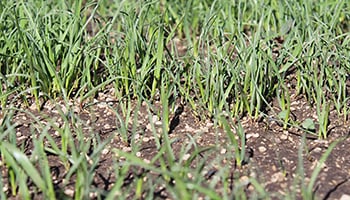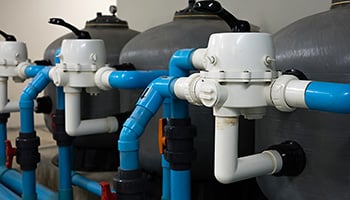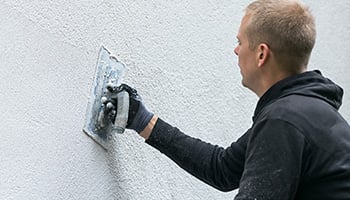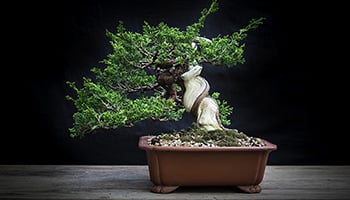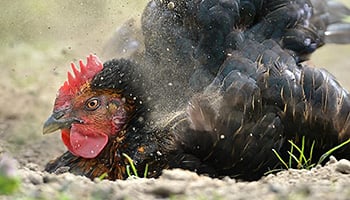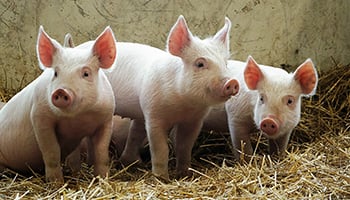Pumice verses X
Expanded Perlite • Expanded Clay • Expanded Shale & Slate • Diatomaceous Earth • Vermiculite • Zeolites • Foamed Recycled Glass
A Comparative Look at Pumice-like Materials
There are a handful of pumice-like materials on the market, touting the same highly versatile, widely applicable foamed stone form factor. What is not pumice-like about them? Their man-made genesis and green-cred sustainability.
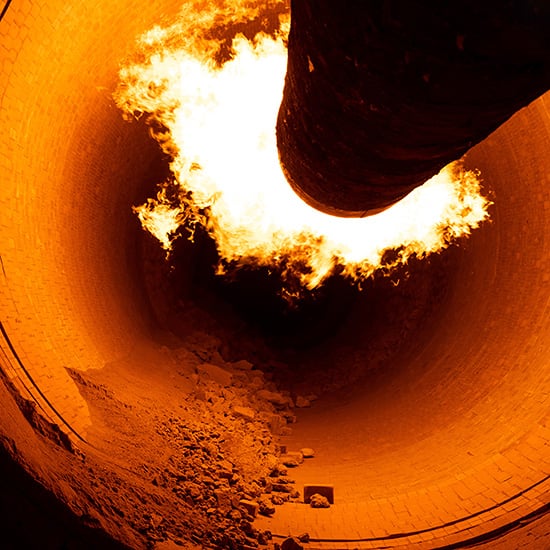 IN ALMOST EVERY CASE (save zeolites and the left-natural-grade subcategory of diatomaceous earths), like-pumice products require a man-forged, energy intensive transformation process—a roaring hot furnace—to puff and pop into that amazingly useful foamed-mineral form. Pumice, on the other hand, was nature crafted: explosively calcined during a volcanic eruption.
IN ALMOST EVERY CASE (save zeolites and the left-natural-grade subcategory of diatomaceous earths), like-pumice products require a man-forged, energy intensive transformation process—a roaring hot furnace—to puff and pop into that amazingly useful foamed-mineral form. Pumice, on the other hand, was nature crafted: explosively calcined during a volcanic eruption.
The calcining (heat-expansion) process for these pumice-like products inflates costs in two columns of the production ledger: to-market price and energy burning carbon footprint.
Of course, pumice will not be a viable substitute for every specialized use claimed by the pumice-like products, but pumice has direct application—or unexplored potential—for most uses, and in many cases, exceeds the performance of the made-alike product.
Pumice vs Expanded Perlite
Perlite ore is hard and glassy and rich with trapped moisture. Mined, crushed to grade, and sent through an expansion furnace, perlite ore pops like popcorn, taking on a useful, bright-white, super light, expanded form—essentially a matrix of tiny fused bubbles.
Super-close images showing the frothy surface texture of pumice (left) and fused-bubble form factor of expanded perlite (right).
Applications for Expanded Perlite
Pumice is the physiochemical equivalent of expanded perlite and delivers similar functionality.1 There are certainly usage applications where pumice does not provide equivalent utility and performance, such as a loose-fill mineral insulation, poured into block cells or blown into the annular space in double-walled cryogenic storage tanks. But in most cases, especially in horticultural applications, pumice absolutely brings the desired performance.
1 Evaluation of Pumice as a Perlite Substitute for Container Soil Physical Amendment. Research by Dianne A. Noland, L. Art Spomer, and David J. Williams; Department of Horticulture, University of Illinois.
POTTING SOIL AMENDMENT. Potting soils used in containerized growing are specialized engineered soils—filling a pot with earth just doesn’t cut it. Perlite fills a key role in the structure profile, drainage, and moisture retention in these purpose-blended soils.
How Does Pumice Compare? Pumice checks the same boxes for specialized potting soil blends. Pumice is a bit denser than expanded perlite, which adds two advantages: it 1) adds a bit more hold-down weight into small and/or lightweight containers, and 2), pumice stays embedded in the soil matrix—it does not float out.
SITE SOIL ROX: HORTICULTURAL PUMICE
SOILLESS GROW MEDIA. High-efficiency, 'ponics-type grow systems that deliver nutrients via water instead of soil often use straight perlite as a rooting base.
How Does Pumice Compare? The advantages provided by perlite—pathogen free, neutral pH, lightweight form factor, control of drainage rates via particle size selection and blending—are also delivered by pumice. Additional advantages include more reuse durability, more heft and better particle interlock for root and plant support, and larger particle-size options in a wider grade range, which is especially valuable for the large bed flood-and-drain type systems.
PDF PUMICE: THE IDEAL SOILLESS GROWING MEDIA
NATIVE SOIL AMENDMENT. Perlite is often used as a soil amendment to improve the physical profile and/or moisture retention rates of poor native soils in gardens and lawns.
How Does Pumice Compare? The performance factors are the same, but where pumice really shines is in large-project cost. When the blend rate percentage needs to increase (heavy clays or sandy soils) and/or the coverage area is more expansive (ball fields, parks, whole-yard landscaping, reclamation of mining or construction sites, biofiltration and storm water control constructs, high-value crop fields), pumice is the economical choice. Available in mine grades that are sold by the ton, pumice can be brought in by the truckload.
PDF PUMICE AND PERLITE: A FUNCTIONAL COMPARATIVE FOR HORTICULTURAL AND GREENSCAPING APPLICATIONS (WHITEPAPER)
PDF CONDITIONING SOIL WITH PUMICE
PDF REPAIR DAMAGED SOILS WITH PUMICE
LIGHTWEIGHT INSULATING CONCRETE. Perlite has some application in making lightweight, insulating concretes for plasters, concrete roofs and floors, spray-on coatings, architectural moldings, and statuary. And perlite is the fist-high champion at delivering integrated thermal resistance-value. But when a more heavy duty aggregate (increased compressive strength) is needed for a lightweight insulative concrete application, pumice is the frothy, economical aggregate of choice.
How Does Pumice Compare? Pumice is a tough, lightweight aggregate widely used in lightweight insulative concrete applications. Large aggregate grades (up to 3/4 inches) are available and provide a greater aggregate size range for construction projects—precast walls, insulated floors and stem walls. Pumice-aggregate concrete is mixed and placed like conventional concrete, with some adjustment needed for increased water demand. For volume-pour projects, the economics of pumice aggregate by-the-ton is an attractive solution.
SITE PUMICE AND CONCRETE • SITE CONCRETE CANOE • SITE LIGHTWEIGHT INSULATIVE CONCRETE
GET ORDER SAMPLESOF APPLICABLE PUMICE GRADES
Pumice vs Expanded Clay
Lightweight Expanded Clay Aggregate (LECA) was initially developed for industrial use—primarily as a lightweight construction aggregate and as a filtration media. In its rounded pebble form, expanded clays have made inroads as a soilless grow media.
Close-ups of pumice grow media (left) and expanded clay pebbles (right).
Applications for Expanded Clay
There are several expanded clay pebble growing media brands competing for market share. Some are shaped into round marbles, others more bean shaped. The kiln-firing process produces a ceramic shell and a porous inner structure. These grow pebbles are touted as having all the necessary characteristics demanded by hydroponic and container growers. Depending on the source clay used (and the resulting density of the expanded pebble), some brands work better in certain system types over others. Many of the brands are imported into the U.S., some with murky origins as to source and manufacturer.
HYDROPONICS & AQUAPONICS SYSTEMS. The primary purpose of the grow media in these types of systems is plant support and ready drainage. The root zone remains open and airy. The nutrients are supplied by water-soluble fertilizers. The surface of the clay pebbles dries out quickly, so a tightly controlled and carefully timed system is necessary.
How Does Pumice Compare? Ponics-grade pumice has been dried and tumbled to remove the fines, but retains the irregular, interlocking form factor of natural pumice stones. For larger, fruiting plants, the nonuniform form factor and the proliferation of tiny, grippy edges on each stone provides critical stability in the growth zone and support to the fruiting plant above.
Pumice also offers a variety of grade sizes, allowing the grower to customize the drainage rate to fit the crop. Adding smaller stones tightens the intra-media spaces and holds water longer between the foamy stones. Blending in smaller stones also provides more surface area to retain moisture and nutrients over a longer period of time for plant uptake.
Pumice grow media (left) and expanded clay pebbles in an aquaponics grow system.
PDF PUMICE IS THE IDEAL SOILLESS GROWING MEDIA
SITE PONICS STONE: SOILLESS GROW MEDIA
POTTING SOILS. Engineered soils for containerized growing can incorporate expanded clay pebbles to improve drainage. If moisture retention is necessary, the pellets need to be crushed into smaller bits to completely expose the foamed interior.
How Does Pumice Compare? Pumice provides a significant advantage in moisture and nutrient retention. The entire surface of every stone is open and thirsty: riven with groves, nooks, and holes ranging from visible and microscopic, yet does not get soggy. Pumice is available in a grade size that fits every need. Larger stones to facilitate drainage; smaller stones to retain more moisture. The easy ability to blend grade sizes allows the grower to engineer the ideal root zone structure for the plant being grown.
PDF SAFETY AND TOXICOLOGICAL DECLARATION
PDF DECLARATION OF ORGANIC STATUS
GET ORDER SAMPLESOF APPLICABLE PUMICE GRADES
Pumice vs Expanded Shale (and Slate)
Expanded shale and slate products, like expanded clay aggregate, are used primarily in horticulture and as lightweight construction aggregates.
Tight-focus images showing the sponge-like surface textures of pumice (left) and expanded shale (right).
Applications for Expanded Shale and Slate
HORTICULTURE. Expanded shale products are marketed for use in engineered soils (containerized soils, lightweight roof-garden soils, urban tree root media under pavement) as well as a structural soil amendment for heavy clays. Typically expanded shales are found in a crushed and screen-sized form factor, instead of pelletized into round and ovoid shapes like expanded clay products.
How Does Pumice Compare? Pumice delivers the same soil component and amendment advantages touted by expanded shale without the carbon footprint. Pumice is enduring, lightweight yet weighty enough to stay in the soil, has a foamy form factor, and available in various grades and in by-the-ton quantities. From a cost and green-cred position, pumice is naturally calcined and fully functional right from the mine.
PDF CONDITIONING SOIL WITH PUMICE
PDF REPAIR DAMAGED SOILS WITH PUMICE
LIGHTWEIGHT GEOTECHNICAL FILL. Lightweight backfills, insulative roadbases, biofiltration structures, reclamative soil improvement projects—expanded shales were designed to meet the need.
How Does Pumice Compare? For every need as detailed above, truckloads of pumice deliver the same performance, and (depending on transportation distance), for less cost.
GET ORDER SAMPLESOF APPLICABLE PUMICE GRADES
Pumice vs Foamed Recycled Glass
The claim to fame for foamed glass aggregate products is found on the feel-good side of the ledger, framed up by high-concept monikers such as “urban mining:” taking waste glass and making something new and useful. Recycling is a well-trod path that has resulted in many viable solutions. It’s also resulted in plenty of expensive solutions. Sometimes the cost can be justified in process savings, disposal savings, or sourcing savings. Other times, the higher cost to reuse and repurpose is embraced as a sort of good-n-green philanthropy.
On the plus side, glass is removed from the waste stream and repurposed. On the minus side is the process itself: the costs (in money and energy burn) to gather, transport, crush, mix with a foaming agent, and kiln-fire the powder to its useful state.
Side by side textural comparison of a natural pumice stone (left) and recycled glass heated and expanded with a foaming agent.
Applications for Foamed Recycled Glass
HORTICULTURAL. The rigid foam aggregate nature of foamed glass has application in the horticulture space, boasting the same performance factors as expanded perlite, clays, and shales, and exfoliated vermiculite.
How Does Pumice Compare? The horticultural applications and performance of pumice widely discussed in other sections applies here as well.
LIGHTWEIGHT AGGREGATE. In this form (typically closed-cell), foamed glass aggregate finds utility insulating and lightweight backfills—road base, bridge abutments, retaining walls. Also marketed as an insulating gravel under concrete floors.
How Does Pumice Compare? In large-scale bulk fill applications, the economical choice is clearly with pumice. Same with the carbon footprint equation.
GET ORDER SAMPLESOF APPLICABLE PUMICE GRADES
Pumice vs Vermiculite
Similar to the perlite expansion process, finished vermiculite is the product of heat-expanding vermiculite ore (a hydrous phyllosilicate mineral; member of the mica family). Known for its horticultural applications, exfoliated vermiculite also has industrial and construction applications. It is quite soft and crumbly, rating a 1.5 to 2 on the Mohs hardness scale.
The hard, vesicular texture of pumice (left) compared to the softer, scaly, worm-like segmented structure of exfoliated vermiculite.
Applications for Vermiculite
HORTICULTURE. Exfoliated vermiculite is used in various horticultural applications and processes—soilless grow media, seed germination, root crop storage, soil conditioner. As a soil amendment, it is primarily used to add airspace to engineered soils, as it has limited water and nutrient-management properties. Per its soft, flaky composition, it tends to breakdown over time, thus losing its in-soil effectiveness.
How Does Pumice Compare? Pumice delivers the same structural-improvement in horticultural and engineered soils applications, with much-improved moisture retention, drainage control, no swelling or sogginess, and particle size variety. Pumice is also seriously long-lived, remaining in-soil functional indefinitely.
PDF CONDITIONING SOIL WITH PUMICE
PDF REPAIR DAMAGED SOILS WITH PUMICE
MANUFACTURED MATERIALS. Some shaped products like pipe insulation and cladding panels as well as fire-resisting spray coatings, acoustic and fire-resistant plasters, and insulating concretes use exfoliated vermiculite as a functional filler.
How Does Pumice Compare? Pumice can be blended with binding agents and mold-shaped (pressure and heat) into abrasive scrub stones, exfoliating and grooming stones, polishing wheels, and similar. Lightweight pumice-aggregate plasters and mortars are also on the market—the HessLite product line, for example. Form-cast and/or spray-applied insulating concretes use pumice aggregate when a more heavy-duty (yet still lightweight) aggregate is needed.
SITE HESSLITE BONDING AND PLASTER PRODUCTS
GET ORDER SAMPLESOF APPLICABLE PUMICE GRADES
Pumice vs Diatomaceous Earth
Diatomaceous Earth (DE) is made up of the silica-rich, fossilized remains of tiny aquatic organisms known as diatoms. Diatoms (in thousands of varieties) have the unique ability to absorb silica and used it to form porous, rigid skeletons. Over millions of years, the skeletal remains of these diatoms built up on the floors of ancient oceans and lakes. Today, some of these diatom deposits are mined and processed for a variety of uses.
DE is available in three grade classifications: Natural Grades, Calcined Grades, and Flux-Calcined Grades. The two furnaced-fired grades (calcined and flux-calcined) are so processed to increase the usability/application profile of DE. For example, the flux-calcined grades add a fluxing agent (such as soda ash) during the high-temp firing process to fuse the diatoms and create larger particle sizes. The calcining process both increases product cost and adds a carcinogenic risk, as the sintering increases the percentage of respirable crystalline silica present in these grades.
Scanning electron microscope photos of powdered pumice (left) and diatomaceous earth.
Applications for Diatomaceous Earth
FEED SUPPLEMENTS. In its purified, food-grade form, producers of diatomaceous earth feed additives claim improvements in livestock health and production. Food-grade DE is USDA approved for use as an anti-caking agent and for internal and external use and is Food Chemical Codex-rated.
How does Pumice Compare? As a feed supplement, pumice is likewise silica-rich and hydrophilic (attracts and holds moisture), but pumice has not been extensively studied nor have domestic pumice producers pursued USDA approval for this particular use.
FILTRATION. For agricultural purposes, DE finds use in water filtration applications using cartridge and tank systems to filter turbidity out of drip irrigation and product wash systems. DE is also used as a swimming pool filtration media.
How Does Pumice Compare? Using pumice as a filtration media has application in mechanical tank systems, such as tank-type “sand” filtration systems that recycle produce wash waters, supply drip irrigation systems, livestock watering systems, and other uses that need clean, clear water. Pumice is an aggressive filter media, trapping contaminates both between particles and on the rough-edged, foamed glass surface. Because it differs in bulk density from sand media, it can be used in concert with sand in dual-media setups.
Pumice also finds application in engineered filtering soils, such as run-off and stormwater surge control bioswales and filtration embankments in urban landscaping and public greenspaces.
PDF PUMICE AS A FILTRATION MEDIA
DRYING and BULKING AGENT. Porous and absorptive, DE and pumice work as drying agents in kitty litter, spill containment, waste-liquid bulking, waste composting, and other moisture-control products and applications.
LIVESTOCK AND PETS. Those that advocate diatomaceous earth as a feed supplement and as bathing dust for chickens stress the importance of purchasing only fresh-water food-grade DE, as common pool filtration varieties are calcined (heat-treated to create a better filtration structure) and present respiratory risks to handler and critter. DE deposits tend to vary widely as to purity (many are contaminated with clays), crystalline-silica (CS) content (typically in the form or quartz, and dangerous to breathe), and hardness/structural durability. DE is also found in some kitty litter products.
How does Pumice Compare? Pumice bathing dust is used almost exclusively by breeders and pet owners of chinchillas, degus and similar furry, dry-land dwelling critters. Pumice is naturally calcined and so comes naturally by its useful form in a variety of particle sizes. It is an amorphous (non-crystalline) silica and thus presents no risk beyond that of a nuisance dust. The absorptive and rough-edged form factor of pumice powders make it highly effective for removing oily grime and controlling parasitic insects on dust-bathing critters. Pumice powders can also be brushed into the coats of pets to combat flea and mite infestation. The pumice from the Hess deposit is naturally pure thanks to centuries of relentless wave action.
SITE CHILLDUST: FOR DUST-BATHING PETS
Pumice is also used to help control moisture and odor in confined animal spaces—stalls, pens, corrals, and coops. It can be layered with straw, shavings, and other bedding materials and later composted. Subsequently, pumice in the compost pile and later in soil provides a performance boost to both.
MECHANICAL INSECTICIDE. The appeal of a mechanical-function insecticide is simple: if toxic chemicals can be replaced by an effective non-chemical insect control solution, why not? DE and pumice share the same effective tiny insect control parameters: they kill by abrasive damage to the exoskeleton and its protective coating, subsequent lipid and moisture absorption, and ultimately, desiccation.
How Does Pumice Compare? A particular functional characteristic of pumice is its friability: even crushed to fine powders, it retains is sharp, glass-knife edges and sponge-like, hydrophilic (a strong affinity for moisture) nature. Insects that come in contact with pumice powder have no defense against this abrading, moisture-wicking doom dust.
SOIL AMENDMENT. DE is marketed as a soil amendment touting the same benefits of other expanded mineral products.
How does Pumice Compare? Pumice, being naturally calcined, is the economical choice for amending soils, especially large scale projects—improving the structure profile of poor native soils in reclamation, landscaping, turf management, and storm surge biofiltration efforts. Pumice also offers a wide range of grades and grade blends to customize drainage and in-soil filtration rates.
PDF CONDITIONING SOIL WITH PUMICE
PDF REPAIR DAMAGED SOILS WITH PUMICE
GET ORDER SAMPLESOF APPLICABLE PUMICE GRADES
Pumice vs Zeolites
Clinoptilolite zeolites have application in the agriculture sector in animal feeds, waste odor control, composting, filtration, and soil amendments. Zeolites share a key characteristic with pumice—they do not need calcination to achieve functional form. Much of the functional value in zeolites is found at the molecular level rather than the physical form factor, although an extensive per-particle surface area, absorptive character and other physical characteristics also contribute in certain applications.
Photos of swimming pool filtration grade (#7) pumice (left) and zeolite. Zeolites’ strengths lie at the molecular level—the ability to work as a molecular sieve.
Applications for Zeolite
ANIMAL FEEDS. Zeolite product companies cite research into benefits of including clinoptilolite zeolite in animal feeds. Zeolites also have benefit as a flow agent, working as a desiccant to absorb water and oils and thus enhancing flow, expediting drying, and inhibiting mold growth. The same benefits apply to feed pelletizing processes.
How Does Pumice Compare? Very little research has been done with pumice in the animal feed category, but pumice is hydrophilic (thus has desiccating properties), and thus the benefits that follow.
WASTE COMPOSTING. Per a unique crystal structure, zeolites are excellent at capturing and holding nitrogen during composting, later making it available for plant use once the zeolite-enhanced compost is blended into the soil. The ability to grab and hold nitrogen (as ammonium) reduces odor from urea and manure that collects in animal confinement spaces. Ammoniated zeolite can then be used as a fertilizer and soil amendment.
How Does Pumice Compare? Research has found pumice to be quite effective in the composting process as well in helping to capture and reduce volatile organic compounds (VOCs). Foamed-stone pumice particles also work as effective bulking agents for improved airflow during composting. In animal confinement moisture control and in composting, especially manure composting, pumice and zeolites can be mixed to leverage the strengths of each.
SOIL AMENDMENT. Zeolites work as a soil amendment, especially in the role of a nitrogen hold-and-release agent. Some zeolite varieties also supply trace nutrients to the soil, such as potassium. Zeolites also contribute somewhat in-soil to improve root zone structure, improve moisture retention, and provide micro-organism support.
How Does Pumice Compare? As discussed extensively elsewhere (cross referenced below), pumice is excellent in the soil at improving physical structure, providing compaction resistance, retaining moisture, enhancing drainage, supporting beneficial soil organism colonies, and more.
PDF CONDITIONING SOIL WITH PUMICE
PDF REPAIR DAMAGED SOILS WITH PUMICE
FILTRATION. Zeolites make good filtration media, especially in taking out heavy metals cations from contaminated waters. They have use as replacement or supplemental media in tank filtration systems. The same oil, gas, nitrogen, and heavy metals capture advantages as filtration media also translate to remediation activities and biofiltration constructs.
How Does Pumice Compare? Pumice is an aggressive filtration media, but lacks the cation exchange and sieve-like ability on a molecular level that make zeolites a good toxin absorbent. Pumice’s strength is in its ability to grab and hold turbidity and contaminates, both as a tank-system filter media and soil-blended in bio-filtration and remediation construction. Pumice and zeolites can be combined to provide a wider overall filtration performance profile.
PDF PUMICE AS A FILTRATION MEDIA
GET ORDER SAMPLESOF APPLICABLE PUMICE GRADES
